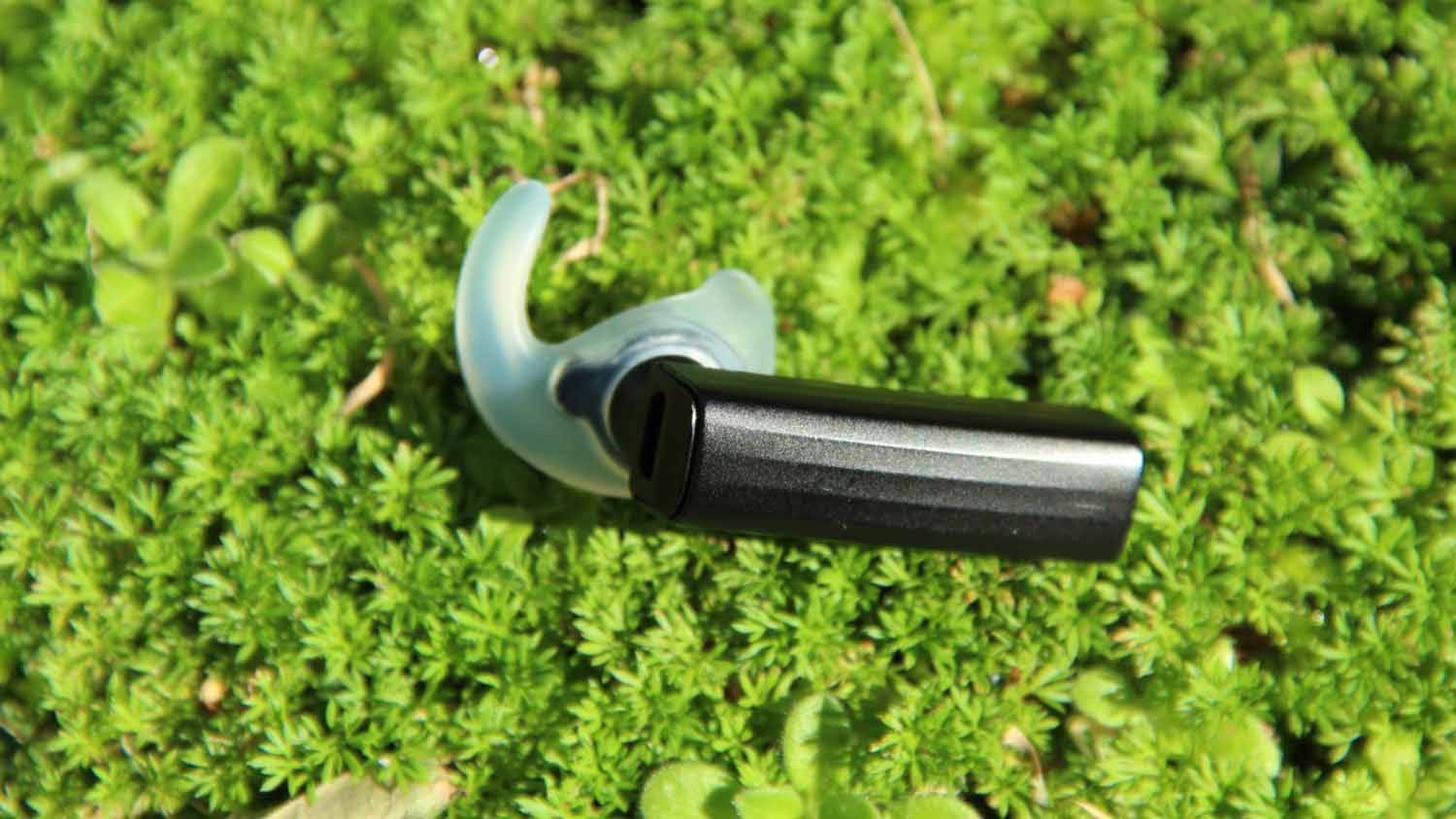TechRadar Verdict
While the Era is an amazing feat of engineering, average audio quality and battery life hold it back from making Bluetooth mainstream.
Pros
- +
Stylish
- +
Small
- +
NoiseAssassin works well
Cons
- -
Limited battery life
- -
Voice control integration needs work
- -
Speaker can sound mushy
Why you can trust TechRadar
Despite its humble beginnings in the Bluetooth audio space, Jawbone has become better known in recent years for its push into wearable technologies like the Jawbone Up24.
But the move into step-tracking doesn't mean that Jawbone has forgotten its past.
The company recently released its latest version of the successful Era Bluetooth headset, and is hoping that some new features taking advantage of today's smartphone features will renew interest in what the company considers to be one of the original wearable technologies.
Simply put, the Era is a marvel of engineering. The tiny device is one of - if not the - smallest Bluetooth headsets ever created.
Measuring in at just 47mm long, 22mm wide and a paltry 13mm deep, the 2014 model of the Era has carved 42 per cent of the bulk out of the previous model.

Also changed is the external design of the earpiece. Gone is the grill-shape of the casing, replaced by a smooth, ridged exterior.
Jawbone has managed to engineer the new model with just a single solder point, giving it a solid, sturdy feeling that breeds confidence in the build quality.
Sign up for breaking news, reviews, opinion, top tech deals, and more.
There's not a lot in the way of controls on this device. On the underside is a tiny power switch, while the back end of the Era hosts its only button, which performs different functions depending on what combination of button presses you use.
The other two points of interest on the headset are the awkwardly shaped silicone earpiece, which can be replaced with a few different sizes that come in the box.
The other is the weird extrusion on the underside of the device that touches your cheek while you wear the device, and is surrounded by a circular LED light that changes colour to indicate what mode the headset is in.
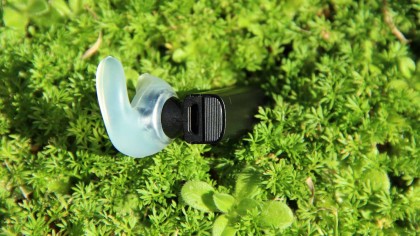
That protrusion is the microphone, and doubles as the vehicle for Jawbone's NoiseAssassin technology, which we'll discuss in more depth below.
From a purely aesthetic perspective, the Era is a nice looking Bluetooth earpiece. But therein lies the catch - it is still a Bluetooth headset and still faces the stigma associated with this device category.
The design of the earpiece in particular is surprisingly effective. Stick it in your ear and shake your head around, and the Era isn't going to go anywhere.
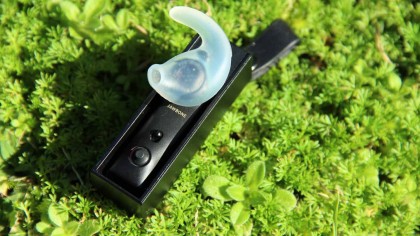
Given that it's nothing but an awkwardly-shaped piece of silicone, this is surprisingly effective. It means you can use the Era while walking around, or even while running.
Of course, that's not to say that the Era is actually "comfortable". You can certainly feel it in your ear, especially when compared to some of the more comfortable pairs of in-ear headphones.
It's not unbearable by any standard, and we've definitely experienced heavier, less comfortable Bluetooth devices, but we were always relieved when we took the earpiece out after wearing it.
A new Era in handsfree
With just a single button on the Era, learning the different shortcuts required to make the device work is kind of like learning Morse code - it's easy to remember a couple, but getting the whole alphabet takes time and practice.
There's a short press to receive and end a call, a long press to adjust call volume and multiple presses to start playing music or redial the last number. Just don't mix those two up, or you'll end up annoying your mother like we did.
Of course, some of these controls are different when you're actually on the phone, which just adds to the complexity.
You can customise the controls to some extent through the Jawbone website. For instance, you can opt to make a long press during a call adjust the volume or mute the call entirely. Or make a long press when idle call a contact or launch your phone's voice control feature.
Also customisable is the device's voice, which offers battery status alerts and confirms the phone number of an incoming call (or contact details of up to 20 of your contacts, after you tell Jawbone which of your 20 contacts you want it to know).
It may not be the most efficient system. The device works with the Jawbone app for iOS and Android, but you can't customise the settings without first connecting the Era to your computer, which seems like an unnecessary barrier.
Still, the ability to have a variety of voices talk to you, from the Mobster to the Bombshell - alongside non-English languages - is certainly interesting, although hardly a huge selling point.
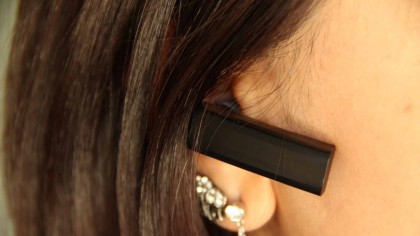
Sounding off
As anyone with even a cursory understanding of speakers knows, audio quality is largely influenced by the size of the speakers. So with a device as small as the Jawbone Era, there's always going to be a question on audio quality.
Jawbone reckons it has the problem under control with a "unique audio porting system", coupled with the earpiece's design and drivers which pump the sound directly into your earhole.
And it mostly works. The speaker is never too loud - it's pumping that sound in directly, so it wouldn't want to be otherwise you'd end up partially deaf - but can occasionally sound a little soft, especially if there's a lot of ambient noise.
The quality can also be a little bit mushy at times. The Era is an HD Voice capable device, so talking across HD Voice networks was fine, but cross the networks and the deficiencies of the tiny speaker become apparent.
The other key component of a Bluetooth earpiece is the microphone, which uses new micro-electro mechanical systems (MEMS) microphones to fit inside the small body, with custom DSP algorithms to make your voice sound nice and clear.
The key element of the Jawbone - the thing that separates it from the other Bluetooth headsets out there - is the NoiseAssassin technology.
Essentially, it uses the protruding microphone to detect the vibrations in your skin to tell the difference between when you're talking and the ambient noise around you.
When it works, it's brilliant. You can be in the middle of festival crowd, and the person on the other end of the phone will only hear what you say when you say it, and none of the other noise in the background.
The catch is that the protrusion needs to be touching your face to work, and for some reason, making that happen was much more difficult than anticipated. Practically every time we tried using the Era for a phone call, it led to instances of that annoying "can you hear me now?" conversation.
Which is ultimately not the scenario you want to be in while closing a multi-million deal while driving your Luxus to the airport, which we assume is the general use-case for Bluetooth headsets these days.
Google it Now, Siri
During our briefing with Jawbone representatives on the new product, they made a big point on how the Era was the next stage of evolution for wearable technology, allowing hands-free engagement with smartphones and taking advantage of new technologies like Google Now and Siri to do more with less.
The idea sounded good in theory. After all, who wants to have to continually pull out their phone to send a text message, when they could just as easily do it by the power of their voice?
What's more, the idea of being able to remotely control your life - your virtual, cloud-based life - by a discreet earpiece is very tempting.
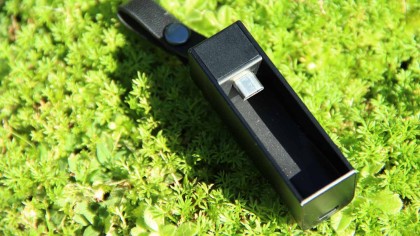
But in reality, this feature hardly worked. Testing with a few Android handsets, including the HTC One M8 and Sony Xperia Z1, the phone struggled to decide whether we were actually pushing the button at all.
Despite the fact it was set to use the voice control feature, a single long press occasionally launched the voice caller option, which was just weird.
The other challenge was that occasionally, pressing and holding the button would do nothing while the phone's screen was off, and sometimes it would.
On the occasions it wouldn't work, unlocking the phone screen and trying again enabled the voice control, albeit with an extended delay between when the audio queue sounded and when the device started listening for voice commands.
But if that were the ultimate solution, it would be fine. Instead, we found that the device would activate through the Bluetooth earpiece, hear commands through the Era and then push out voice responses via the phone's built in speaker.
We're not sure who to push the blame on here – Is this a Google Now or a Jawbone inadequacy? It's also worth noting that we're yet to test it with Siri, which could obviously affect our impressions.
But one thing for certain is that the futuristic ideal of simply controlling your digital life via a Bluetooth earpiece is like crude oil - it needs a lot of refining before it will be a practical solution.
Juicing up
Jawbone proclaims you'll get four hours of talk time from the Era, with 10 hours of standby, which should be enough for you to plug the device in your ear and leave it there for most of the working day.
In practicality, when you're actually using the device a lot, either for listening to music or attempting Google Now searches or talking to people on the phone, the battery does tend to die off fairly quickly.
You may get through the working hours of your day with the Era embedded in your ear, but you might not. If you're happy to take a break from it occasionally - and you'll want to do that to keep it comfortable - it won't be a problem.
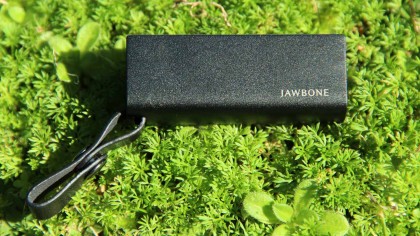
We'd love to see that battery life doubled for true convenience, but the simple fact is that battery technology just isn't up to par. The fact that you can get four hours from such a small device is pretty impressive, when you actually think about it.
Jawbone is selling two versions of the Era - one with a miniature charging dock that holds a full charge and a half for the headset, which should help anyone on the road make it through the full day - and one without.
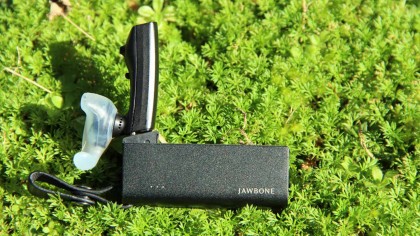
Verdict
The market for Bluetooth headsets was never quite mainstream. But while the early days of the category were littered with large, cumbersome devices, the modern release of the Jawbone Era shows that Bluetooth earpieces can be small and discreet.
Of course, the Era is also competing with some excellent advances in stereo headsets, which offer advantages in both audio streaming and battery life thanks to their extra size.
With the advent of voice control services like Siri, Google Now and Cortana, there is definitely the possibility that we'll see Bluetooth headsets become much more common.
But before that happens, the services themselves need to become a lot more reliable, and the software that interfaces with them needs a robust improvement.
We liked
This thing is small and lightweight, and that is a win over the stigma usually associated with Bluetooth headsets.
Well designed and well built, it feels sturdy in your ear, and the silicone earpiece you plug into your ear never feels like it's about to fall off.
Jawbone's NoiseAssassin technology is pretty impressive too. Talking to someone who is wearing the headset, you won't really hear the ambient noise at all, and that is something no smartphone user can say.
We disliked
It may be sturdy in your ear, but it's hardly comfortable, and extended periods can leave your ear sore and tired.
Of course, that doesn't often pose a problem, as the battery life could definitely use some expansion. We understand that something this small is always going to have limitations on battery life, but if you can't get through a full day, that's probably not enough juice.
But the biggest hiccup we experienced was the integration with voice control services like Google Now. Pitched as the best way to control your smartphone, it rarely worked and left us feeling underwhelmed.
Final verdict
Jawbone pitched this renewed Era headset to us as another wearable technology that would allow us to interface with our smartphone handsfree.
And it did - kind of - but that implementation still needs a lot of work before it becomes intuitive and reliable enough to become mainstream.
Don't get us wrong - if you're looking for a Bluetooth headset, this is a really solid option. But it's not good enough to suggest everyone should go out and buy one as a way of getting more from their smartphone.
